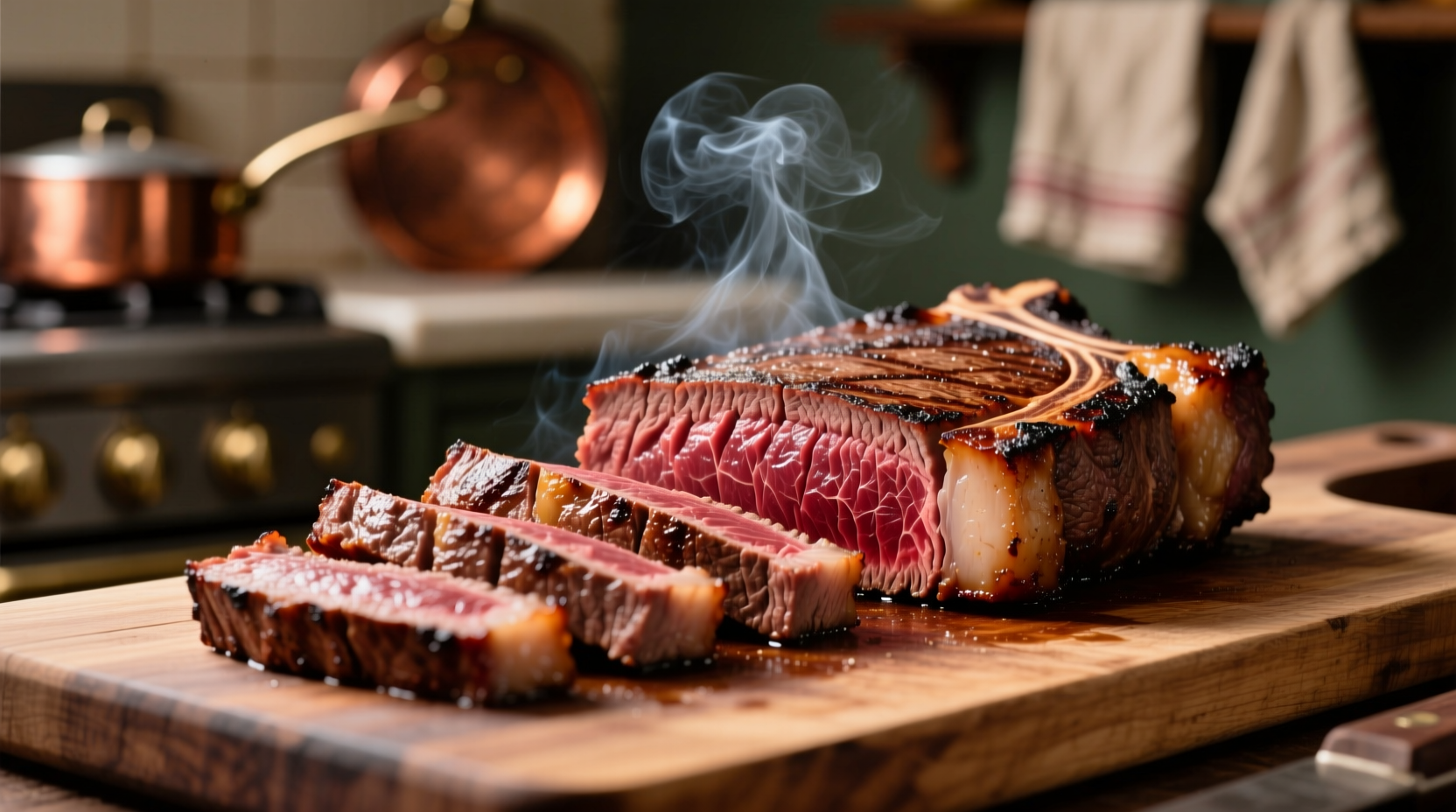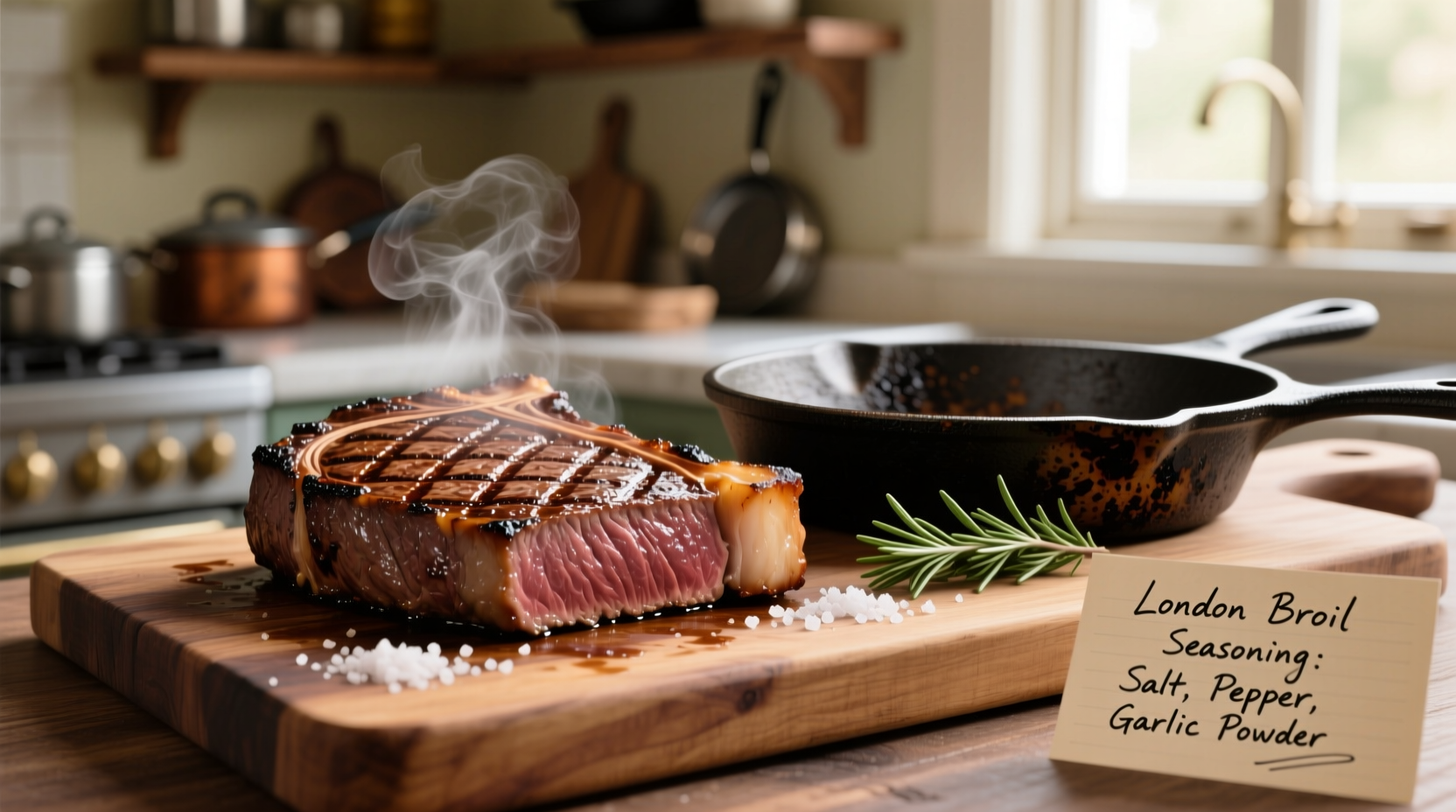Why London Broil Confuses Home Cooks (And How to Master It)
Many home cooks struggle with London broil because they mistake it for a specific cut of meat. In reality, London broil refers to a cooking technique typically applied to lean, tough cuts like top round or flank steak. Understanding this distinction is the first step to consistently tender results.
Unlike premium steaks like ribeye or filet mignon, these lean cuts require specific preparation to overcome their natural toughness. The USDA Food Safety and Inspection Service confirms that proper cooking technique can transform less tender cuts into delicious meals when handled correctly (USDA FSIS).
The Science Behind Tender London Broil
London broil's toughness comes from its muscle structure. These cuts come from heavily exercised parts of the cow, creating dense muscle fibers. Two key processes break down this toughness:
- Acid-based tenderizing: Marinating ingredients like vinegar, citrus, or wine break down proteins
- Enzymatic tenderizing: Ingredients like pineapple, papaya, or ginger contain natural enzymes that soften muscle fibers
Food science research shows that marinating for 4-12 hours provides optimal tenderization without making the surface mushy. Longer than 12 hours can actually toughen the meat as acids begin to 'cook' the surface (American Meat Science Association).
| Cooking Method | Best For | Cooking Time (1.5" thick) | Key Advantage |
|---|---|---|---|
| Oven Broiling | Winter months, consistent results | 6-8 minutes per side | Precise temperature control |
| Grilling | Summer cooking, smoky flavor | 5-7 minutes per side | Excellent char and flavor development |
| Cast Iron Skillet | Rainy days, indoor cooking | 5-6 minutes per side | Perfect sear with oven finish option |
Step-by-Step London Broil Perfection
Preparation: The Critical First Step
Start with a 1.5-2 inch thick cut (thinner pieces overcook easily). Pat the steak completely dry - moisture is the enemy of proper searing. Create a marinade with these essential components:
- Acid (1/4 cup): Red wine vinegar, balsamic, or citrus juice
- Oil (1/2 cup): Olive or avocado oil to carry flavors
- Aromatics: 3 minced garlic cloves, 1 tbsp fresh rosemary
- Seasoning: 1.5 tsp kosher salt, 1 tsp black pepper
Marinate in a resealable bag in the refrigerator for 4-12 hours. Never reuse marinade that's contacted raw meat unless boiled for 2 minutes first.
Cooking: Precision Temperature Control
Remove steak from refrigerator 30 minutes before cooking. Preheat your cooking surface to high heat. For oven broiling, position rack 6 inches from heat source.
Cooking times vary by method but follow these universal principles:
- Cook 6-8 minutes per side for medium-rare (130-135°F internal temperature)
- Use an instant-read thermometer for accuracy - don't guess
- Flip only once during cooking to maintain even searing
The National Steak Association recommends pulling London broil 5 degrees below target temperature since it continues cooking while resting (Beef Research).

Resting and Slicing: Where Most Home Cooks Fail
Rest your London broil for 10-15 minutes before slicing. This critical step allows juices to redistribute throughout the meat. Cutting too soon releases all those precious juices onto your cutting board.
When slicing, follow these professional tips:
- Use a sharp carving knife (dull knives tear the meat)
- Cut against the grain at a 45-degree angle
- Aim for 1/4 inch thick slices - thicker slices feel tougher
This slicing technique shortens the muscle fibers, making each bite significantly more tender. It's the single most important factor in transforming London broil from tough to tender.
Troubleshooting Common London Broil Problems
Why Your London Broil Turns Out Tough
Three primary reasons London broil fails:
- Insufficient marinating time (less than 4 hours)
- Overcooking (beyond 140°F internal temperature)
- Improper slicing (with the grain instead of against it)
If you've overcooked your London broil, thinly slice it and marinate in a mixture of equal parts beef broth and red wine for 2 hours before serving. This can rescue moderately overcooked steak by reintroducing moisture.
Serving Suggestions That Elevate Your London Broil
London broil pairs beautifully with these accompaniments:
- Roasted garlic mashed potatoes - the creaminess balances the lean steak
- Grilled asparagus with lemon zest
- Red wine reduction sauce made from the pan drippings
For leftovers, London broil shines in steak salads, fajitas, or as the star of breakfast hash. Thinly sliced cold London broil also makes excellent sandwiches with horseradish mayo.
London Broil Through the Decades: How Preparation Has Evolved
London broil originated in the early 20th century as a way to make inexpensive, tough cuts palatable. Originally, it referred specifically to flank steak broiled and served with a Worcestershire-based sauce.
Over time, the term expanded to include other lean cuts as butchers sought to market less expensive steaks. Modern understanding of meat science has refined the technique, emphasizing precise temperature control and proper slicing that weren't widely known in earlier decades.











 浙公网安备
33010002000092号
浙公网安备
33010002000092号 浙B2-20120091-4
浙B2-20120091-4